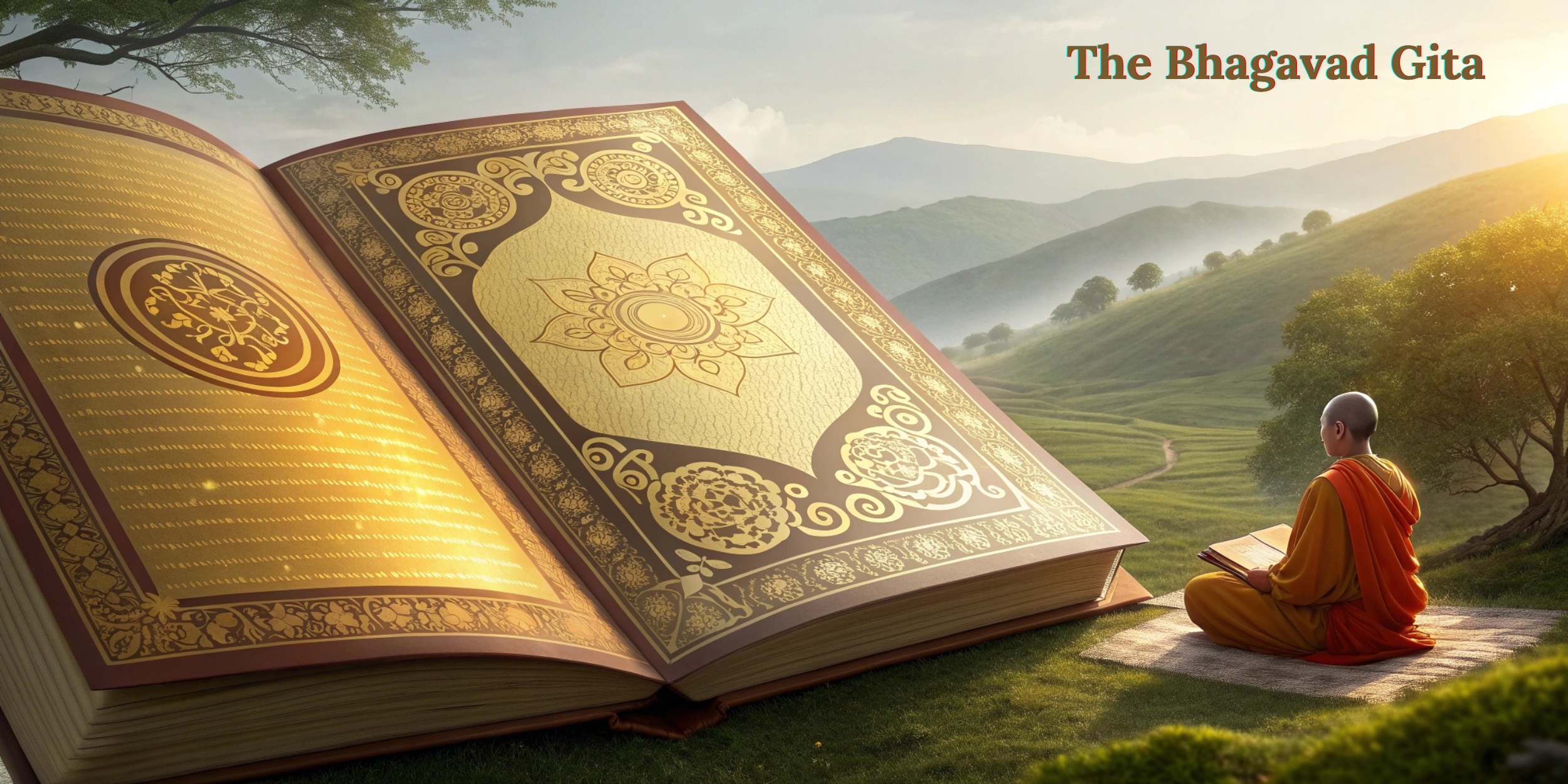Introduction
The Bhagavad Gita is a timeless and revered Hindu scripture that holds profound spiritual wisdom. This sacred text is a 700-verse dialogue between Prince Arjuna and the divine incarnation, Lord Krishna. Set on the battlefield of Kurukshetra, the Bhagavad Gita explores themes of duty, righteousness, and the paths to spiritual enlightenment. Its teachings offer guidance on how to navigate life’s challenges, make ethical choices, and attain inner peace through selfless action, devotion, and knowledge. The Bhagavad Gita‘s universal wisdom transcends cultural and religious boundaries, continuing to inspire and enlighten people around the world.
The Bhagavad Gita, often simply called the Gita, remains a guiding light for those seeking clarity and purpose in life. Through its philosophical depth and practical wisdom, it addresses the fundamental dilemmas of human existence and provides a blueprint for leading a balanced and meaningful life.
The Setting and Context of the Bhagavad Gita
To truly grasp the essence of the Bhagavad Gita‘s teachings, we must understand its setting. The Kurukshetra battlefield symbolises the battlefield of life, where each one of us faces our own struggles and dilemmas. Like Arjuna, we often find ourselves grappling with ethical decisions and inner conflicts. The Bhagavad Gita teaches us how to navigate through these challenges and make righteous choices, emphasising that every individual must uphold their duty (dharma) without fear or hesitation.
The Call to Action in the Bhagavad Gita
One of the central themes of the Bhagavad Gita is the call to action and duty (dharma). Lord Krishna encourages Arjuna to fulfil his duty as a warrior without attachment to the results. This principle of detached action reminds us to perform our responsibilities diligently, focusing on the process rather than the outcome. By doing so, we can free ourselves from the bondage of desires and attain inner peace. The Bhagavad Gita thus becomes a guiding force in understanding how duty, discipline, and devotion can lead to a fulfilling life.
The Three Paths to Liberation in the Bhagavad Gita
In the Bhagavad Gita, Lord Krishna outlines three main paths to attain liberation (moksha) and achieve spiritual realisation. These paths, known as yogas, offer different approaches to connecting with the divine and transcending the cycle of birth and death. Each path is suited to different temperaments and inclinations, and Lord Krishna emphasises that all sincere paths lead to the same ultimate goal—union with the Divine. Let’s explore these paths:
Karma Yoga: The Yoga of Selfless Action
Karma yoga is the path of selfless action and service. It teaches that individuals should perform their duties and responsibilities without attachment to the fruits of their actions. By surrendering the fruits of actions to the divine, individuals develop a detached and equanimous attitude towards success and failure. The Bhagavad Gita presents Karma Yoga as a way to purify the mind and dissolve the ego through acts of service and dedication.
Bhakti Yoga: The Yoga of Devotion
Bhakti Yoga is the path of love and devotion to the divine. It emphasises cultivating an intimate and loving relationship with the Supreme, seeing the divine presence in all aspects of life. The Bhagavad Gita teaches that through heartfelt prayers, worship, chanting, and surrendering to the will of the divine, a seeker can experience a deep connection with cosmic consciousness.
Jnana Yoga – The Yoga of Knowledge and Wisdom
Jnana Yoga is the path of knowledge and wisdom. It involves deep introspection, self-inquiry, and contemplation on the nature of reality and the self. The Bhagavad Gita explains that by realising the imperishable nature of the self (atman), one can break free from the cycle of birth and death. This path requires intellectual rigour and a sincere desire to seek the truth.
The Nature of the Self in the Bhagavad Gita
The Bhagavad Gita delves into the nature of the self (atman) and the concept of the eternal soul. Lord Krishna explains that the soul is immortal and indestructible, passing through cycles of birth and death. Understanding the eternal nature of the self helps us overcome the fear of mortality and embrace life’s challenges with courage. This wisdom from the Bhagavad Gita reassures us that beyond our temporary existence, there is an eternal truth that we are all part of.
Overcoming Doubt and Despair with the Bhagavad Gita
Arjuna’s initial state of confusion and despair mirrors our own human frailties. The Bhagavad Gita reminds us that doubt is a natural part of the human experience. By seeking divine guidance and following the path of righteousness, we can rise above our doubts and find strength even in the darkest of times. The Bhagavad Gita serves as a beacon of hope, showing us how to remain steadfast despite uncertainty.
The Supreme Reality in the Bhagavad Gita
Lord Krishna reveals himself as the Supreme Being, the ultimate reality behind all existence. This revelation emphasises the importance of connecting with the divine and recognising the divinity within ourselves and all living beings. By aligning ourselves with the Supreme, as taught in the Bhagavad Gita, we can attain spiritual fulfilment and harmony.
Conclusion
As we conclude our journey into the timeless wisdom of the Bhagavad Gita, we find ourselves enriched with profound insights and spiritual guidance. This sacred scripture, set on the battlefield of Kurukshetra, transcends the barriers of time and space, offering a universal roadmap to navigate the complexities of life and attain inner harmony.
The Bhagavad Gita presents three paths to liberation: Karma Yoga, Bhakti Yoga, and Jnana Yoga. Each path carries its own unique essence, catering to different temperaments and inclinations. The path of selfless action (Karma Yoga) teaches us to perform our duties with dedication and detachment, while the path of love and devotion (Bhakti Yoga) leads us to surrender to the divine with utmost faith and adoration. Simultaneously, the path of knowledge and wisdom (Jnana Yoga) encourages deep introspection and self-inquiry to realise the true nature of the self.
The Bhagavad Gita remains an eternal beacon of light, illuminating the path to self-realisation, fulfilment, and eternal bliss. By integrating its wisdom into our daily lives, we can lead a life filled with purpose, compassion, and divine consciousness. Let us carry the timeless wisdom of the Bhagavad Gita in our hearts, nurturing our spiritual growth and guiding us through the challenges of existence.



